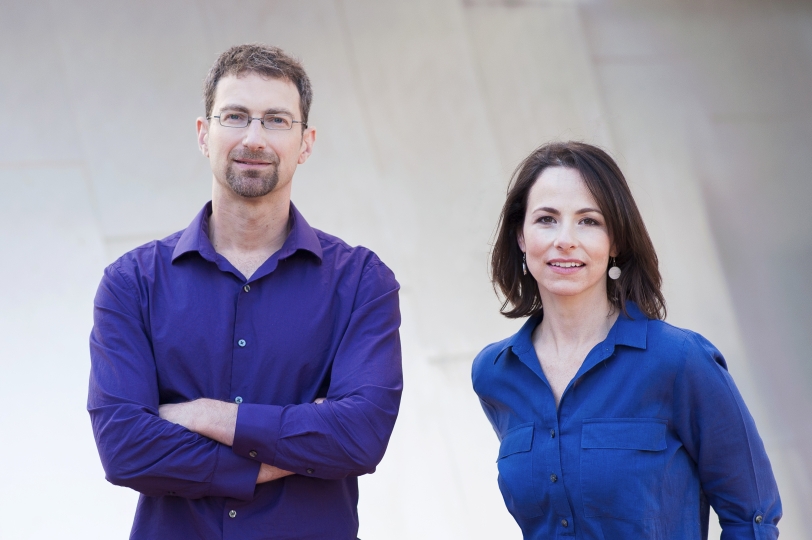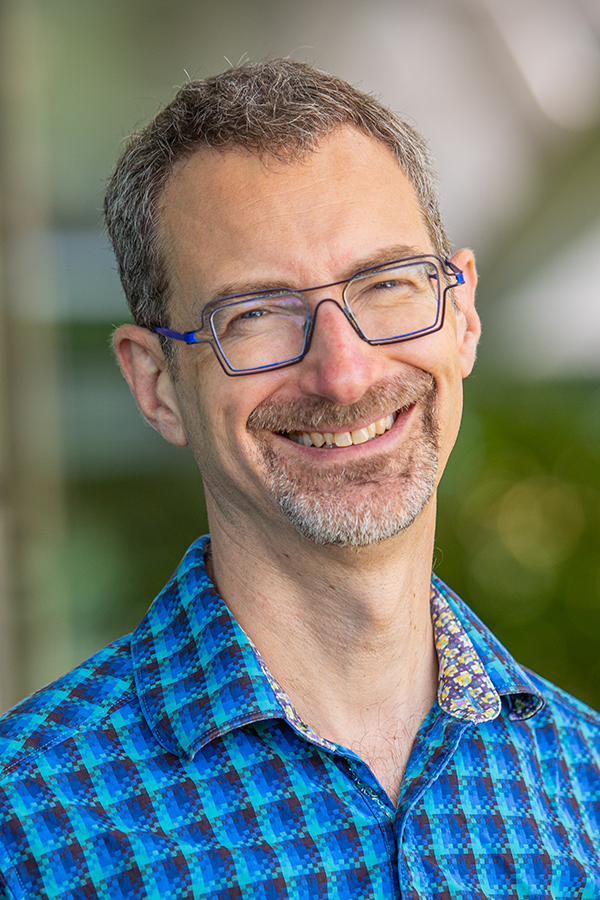News
Data visualization pioneers Fernanda Viégas and Martin Wattenberg will join the Harvard faculty. Their research has helped define visualization as a field, creating interactive and open-source tools for examining a wide range of scientific, social, and artistic questions.
Martin Wattenberg and Fernanda Viégas will join Harvard in fall 2021 and spring 2022 respectively, and will hold appointments as Gordon McKay Professors of Computer Science at SEAS. Their research has helped define visualization as a field, creating interactive and open-source tools for examining a wide range of scientific, social, and artistic questions. (Photo credit: Matthew Jason Warford)
In addition to inventing tools to illuminate systems based on machine learning and artificial intelligence – for products used daily by millions of people, such as Search, YouTube, and Google Analytics – their artwork has been exhibited at the New York Museum of Modern Art, the Whitney Museum of American Art, and the London Institute of Contemporary Arts, among others. Wattenberg, who will join Harvard in fall 2021, and Viégas who will start in spring 2022, will hold appointments as Gordon McKay Professors of Computer Science at the Harvard John A. Paulson School of Engineering and Applied Science (SEAS). Both also will be affiliated with Harvard Business School (HBS), and Viégas will be the Sally Starling Seaver Professor at the Radcliffe Institute for Advanced Study.
The long-time collaborators are co-leads of Google's PAIR (People + AI Research) initiative, a team whose goal is to advance the research and design of people-centric AI systems.” They plan to maintain their relationship with Google, stepping away from day-to-day management but continuing to provide strategic direction to the PAIR group.
“I’m hoping there can be really nice collaborations between our work at Harvard and at Google,” Wattenberg says.
Viégas and Wattenberg came to visualization from separate paths. Her initial training was in design, and his was in mathematics and computer science. They joined forces in 2003 and began exploring the possibilities of visualization as a medium.
“I feel like technology should be a humanist endeavor. That’s a lot of the focus of what Fernanda and I have been working on,” Wattenberg says. “We’re trying to think about how we bring this very broad human perspective to technology. How do people interact with these systems?”
He notes that in addition to the myriad societal challenges emerging from the rapid evolution of machine learning and AI, the pair are attracted to many problems out of pure intellectual curiosity.
“For instance, if you have a new deep learning system that works well, there’s still a lot of mystery about how it works. It’s a very basic scientific problem that is incredibly interesting and appealing in and of itself, and might even tell us something about how the human mind works.”
Much of their research is centered around an ethos of what Viégas refers to as democratizing the technology. “There are very large benefits that can come from this technology,” she says, “but we will only see those benefits if we design in a very participatory, inclusive way. The idea of democratizing data and information is incredibly powerful.”
Wattenberg adds: “You can look at data visualization as an intelligence augmentation technology. It’s something that makes humans smarter and lets people make better decisions, communicate better, collaborate together better.”
Contemplating the move from industry to academia, Viégas says “the opportunities for collaboration are endless – in health care, government, biology, law. There are so many different uses for applied machine learning, so many powerful computational tools, and so many questions we can ask about society, about information. The big appeal to be at a place like Harvard is that it opens a whole range of possibilities that don’t exist in industry.”
Viégas says she is also looking forward to returning to doing some of the more artistic work that she and Wattenberg collaborated on earlier in their careers.
“The kind of project that brings me the most joy is when you intersect art, design, and computer science. I live for these moments when you bring very complex, powerful information to people who were not experts in the kind of information being shown.”
One of the most famous examples of that intersection is the pair’s wind map, a mesmerizing visualization that uses surface wind data from a National Weather Service database to display real-time wind speeds with moving, comet-like trails. The work was the first web site acquired by the New York Museum of Modern Art.
The wind map is a mesmerizing visualization that uses surface wind data from a National Weather Service database to display real-time wind speeds with moving, comet-like trails. It is designed to provide a dense, easily readable field and to highlight areas of high wind speed.
“There is so much science behind a project like that, especially the way you go about portraying the data,” Viégas says.
When the wind map was made live on the web, professional meteorologists started using it. “One meteorologist explained to us that he’d been in this field for 25 years and had been looking at this kind of data every day. Yet it took the wind map for him to better understand some of the differences in wind patterns. All of a sudden, it was easy to see the details and major trends at once. The visualization brought a new level of understanding. That’s what I want to do.”
Viégas, a native of Brazil, earned her Ph.D. from the MIT Media Lab. Wattenberg received a Ph.D. from U.C. Berkeley.
Before joining Google, they founded Flowing Media, Inc., a visualization studio focused on media and consumer-oriented projects. Prior to Flowing Media, they led IBM’s Visual Communication Lab, which created the ground-breaking public visualization platform Many Eyes.
Topics: Academics, Computer Science, Design
Cutting-edge science delivered direct to your inbox.
Join the Harvard SEAS mailing list.
Scientist Profiles
Fernanda Viegas
Gordon McKay Professor of Computer Science
Martin Wattenberg
Gordon McKay Professor of Computer Science






